A story that is over 280 years old tells the tale of a member of a tribe in India who rushed to hug a tree, that was to be taken down to build the King’s palace, in order to protect it from being cut down. A tribe member who could not bear to witness the destruction of both her faith and the village’s sacred tree. She decided to hug the tree and encouraged others to do so too, proclaiming: ‘A chopped head is cheaper than a felled tree.’ (O’Neill, 2010) Other people from the community came and did the same. 363 members were killed trying to protect the trees being cut down. These would be the first recorded ‘tree huggers’ in history and would inspire others to resort to radical actions to protect nature.

The topic of man’s relationship with nature was presented in Henry David Thoreau’s book, Walden, that reflected on simple living in natural surroundings in the late 19th century. But urban dwellers of today have become disconnected from nature. What is a healthy ecosystem and a healthy city now? Landscapes on and around our buildings and infrastructure can be more than an optional ornamental extra but a multi-functional layer of soil and vegetation that controls surface water, provides food and wildlife habitat and keeps us cool, fit and sane. ‘To make this transformation from grey to green will require panoramic, trans-disciplinary thinking and coordinated action.’ (Grant, 2012) Our built environment is predominantly building blocks and ornamental landscaping that all affect the way we construct sustainable and ecological cities. We as architects have a large responsibility in working towards restoring balance between buildings, cities and our biological contents. Surely ecological built environment without ecological architecture is impossible. Architects need to utilize experts in related fields like landscape architects, urban design and planning, permaculturalist, and policy makers and build harmoniously with ecosystems.
The environmental movement, around the world, originated at different times. In America it started in the 20th century with a concern about the wilderness, pollution and human health. But it was not until after World War II that people started to recognize how important the protection of nature and management of the natural resources was. Believing that the destruction of the forests, fertile soil, wildlife and water resources would be the downfall of the society as people began to recognize the real costs of environmental negligence after experiencing some environmental disasters after the second World War. In the 1960’s, America was in a time of transition. Society was changing and becoming increasingly divided. Young people were setting up rural communes and experimenting with sustainable and a more authentic lifestyle than the suburban and corporate mindset that was ruling America at that time.
A countercultural entrepreneur and journalist, Stewart Brand wanted to explore the idea of supplying solutions and ideas to those young people. The Whole Earth Catalog was first published in 1968 and it listed a range of products for sale for a creative and self-sustaining lifestyle. But it was more than a place to advertise products for sale, it focused on products that reinforced both a diversification of practice and a holistic understanding of man and nature, using phrases such as ‘think globally, act locally’ (Whole Earth Catalog, n.d.) to evoke awareness of the importance of ecology, both as a field of study and as an influence for the future of humankind and emerging human awareness. It soon became a cultural phenomenon for the sustainable movement and was used as an effective way to spread ideas to millions of people. Initially aimed at the hippies in the new communalism movement, it soon addressed readers looking to make changes from inside the city and suburbs. We were on the brink of a worldwide social collapse that would be caused by resource depletion,pollution, overpopulation and the proliferation of military technologies whose power exceeded our sense of responsibility. (Horvitz, The Whole Earth Catalog, n.d).
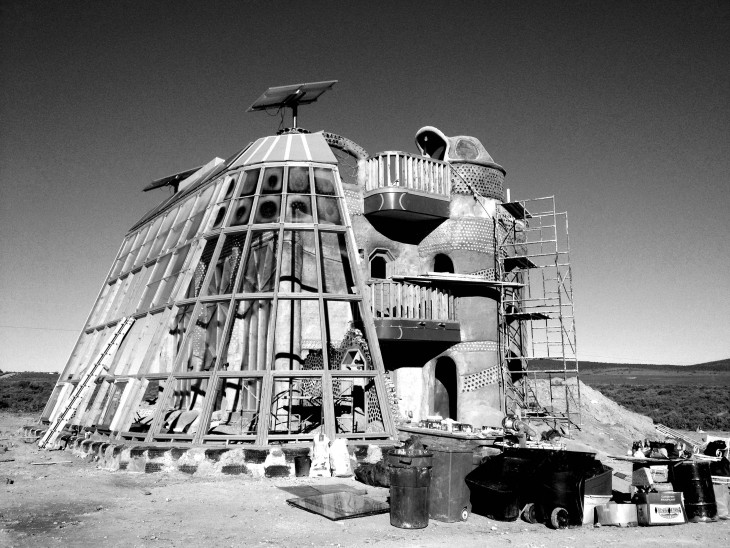
Earthship ‘the Towers’
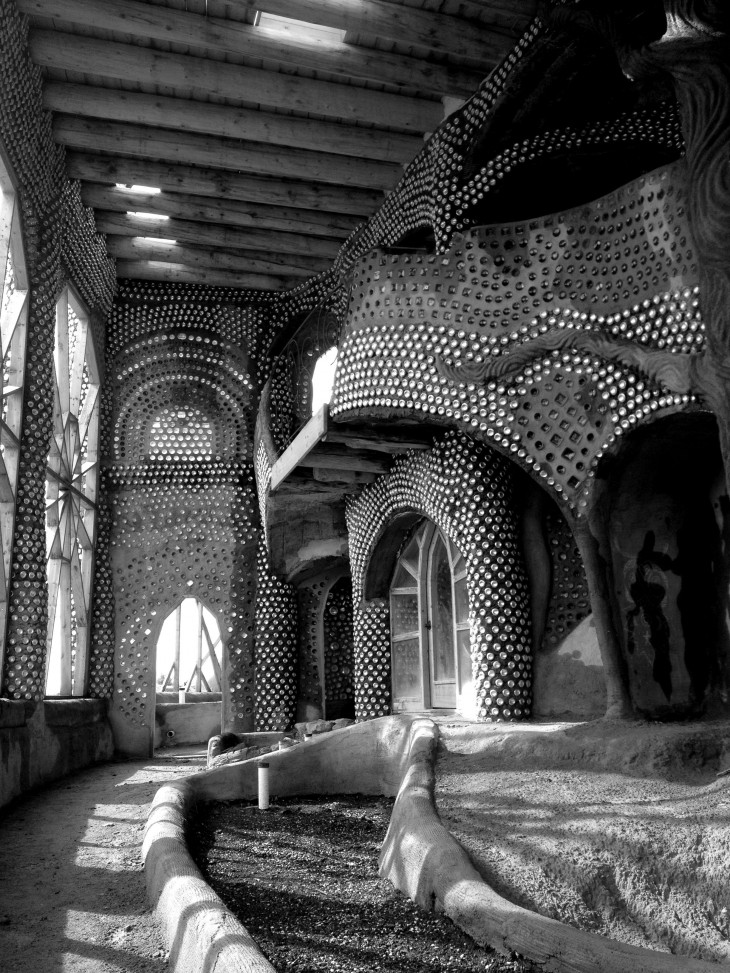
‘EVE’ Earthship in Taos
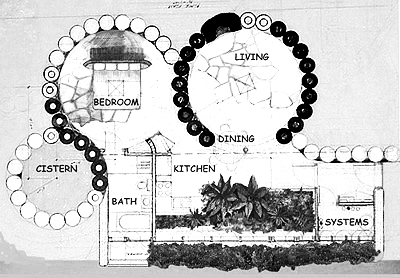
Earthship Plan
To avoid being drafted to the war in Vietnam, Michael Reynolds, graduated architecture student, went into hiding in the New Mexico desert, but what he discovered there were endless possibilities of living off the grid and taking care of the planet. He was concerned with all the waste produced in the world he wanted to use it and apply it to a new way of construction. Reynolds called his buildings Earthships as it describes the purpose of these off-the grid homes. Earth is something that is in and of the earth and a ship is an autonomous vessel, with its own power, water, comfort, sewage, food. Therefore it is an Earth + Ship. These buildings were originally located in areas without any infrastructure, but due to New Mexico law about subdivisions they had to construct roads, put up signs and have a community well. For over 40 years Reynolds has been developing these homes that rely on recycled materials as well as establishing an experimental community called the Greater World Earthship Community in Taos.

These buildings are all designed around the idea that they are self-contained living facilities that would provide the occupant with everything they would possibly need. These buildings are made from walls of tyres rammed full of earth and a mix of conventional, salvaged and recycled materials. With a south-facing structure, they are shaped to maximise the sun’s energies as ‘stored’ heat in the thick walls for a steady internal temperature. All energy used in the building is generated on site from renewable sources. Earthships are made from recycled materials and earth-sheltered, to make use of the earth’s ambient temperature. Reynolds has become very controversial with his designs and methods of building and he continues to strengthen the design but his work has stayed true to his original vision. Connecting the dots between our buildings, energy use and carbon emissions, Earthships are an architectural response to climate change and works to promote low carbon alternatives. All buildings are meant for habitation, they are meant for life, and our lives, in turn depend on the environment in which we live. Earthships explore the relationship between humans and the natural world, linking life to the elements of nature that sustain our lives.
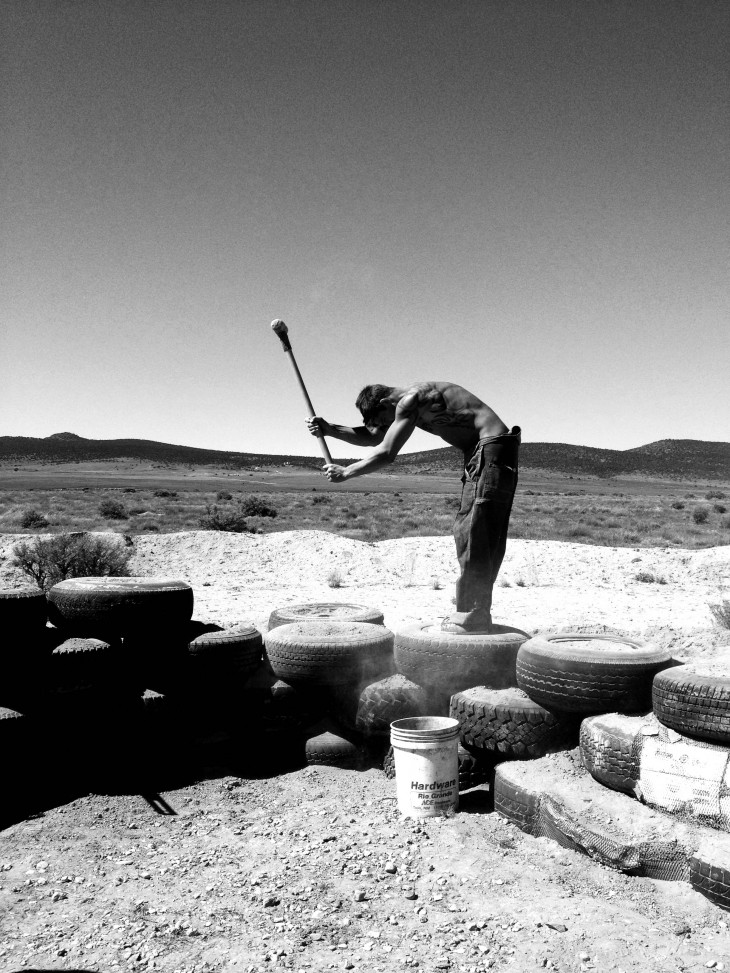
Back wall, Earthship tyre ramming
Due to the high costs of construction and energy there is an obvious motivation for people to become greener and build buildings such as Earthships. But there is also a greater awareness that green, healthy homes have a greater payoff in regards to overall health and sense of well being. The theory of Edward O. Wilson is that ‘We have an subconscious need to bond with other living systems, suggesting that we are not at our best in isolation from nature’. (Bergman, 2012, p. 96).
The main question is, how sustainable are conventional houses, passive houses and earthships, based on legislation, environmental impact and operating energy? As mentioned earlier nature is often just seen as a superficial embellishment in the urban landscape, as in parks and gardens, instead of being an important part of the urban form. Ecosystems provide our basic human and social needs.
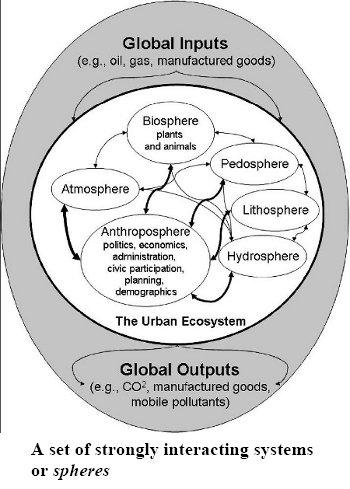
Interacting system
The biophilia hypothesis suggests that humans have an innate tendency to affiliate with other living organisms and living processes. Humans require contact with a biodiverse world to stimulate the development of their emotional, cognitive, and social potential.(Samiei, 2013)
There is a need for the urban form to connect to organic structures systematically. The health of the biodiversity is at stake and this will affect us as well. We use a lot of natural resources to produce what we need but return it as waste, and this increases our ecological footprint on this earth. In an urban ecosystem, we influence ecological factors such as plants, soil, air and we make decisions on where to build and live that is also based on ecological factors. Social factors and the respect for multi-cultural and ethnic diversity are also important to develop a healthy city.
Urban ecology is the study of ecosystems that include city dwellers and the urbanised landscape as well as the application of ecology principles to study the urban environments. As society is changing, with more complexity, a new methodology of creating architecture and organising the urban environment is needed. The guiding principles of urban ecology aims to understand how people and the ecological processes in urban settings can be connected and work together towards increased sustainability. This kind of process requires an understanding of ecological patterns to try to follow a complexity that imitates the fluidity of natural systems and allowing the structure of a natural behavior to emerge. ’Ecological design is the careful meshing of human purposes with the larger patterns and flows of the natural world; it is the careful study of those patterns and flows to inform human purposes .’ (Orr, 1992)
By building ecological structures we are utilising the intelligence to create effective adaptation and integration to nature’s processes. These structures will make our ecological footprints less stressful and promote the rehabilitate the connection with rehabilitated vegetative networks, which in turn will enhance the quality of life of human and wildlife occupants.
References:
Bergman, D. (2012). Sustainable Design, A critical guide. New York: Princeton Architectural
Press.
Grant, G. (2012): Ecosystem Services Come to Town, Greening Cities by Working with Nature, John Wiley and Sons Ltd, London.
Joshi, L.R. (n.d.). Introduction to Urban Ecology. [online]. Available from:
http://www.forestrynepal.org/notes/biodiversity/introduction/conservation-biology/urban-ecology
[Accessed on 9. December, 2015]
Kuil, E. (2012). The sustainability of conventional houses, passive houses and earthships, based on legislation, environmental impact energy and operating energy. [pdf] Available from:
http://www.rug.nl/research/portal/files/14411936/EES-2012-155T_ElenaKuil.pdf
[Accessed on 5. December 2015]
O’Neill, B. (2010). [online]. Available from:
http://nvdatabase.swarthmore.edu/content/bishnoi-villagers-sacrifice-lives-save-trees-1730
[Accessed 5. December, 2015]
Orr, David. (1992): October. “Environmental Literacy: Education as If the Earth Mattered.” E. F. Schumacher Lectures.
Samiei, K. (2013). Architecture and Urban Ecosystems: From Segregation to Integration. [online]. Available from:
http://www.thenatureofcities.com/2013/05/26/architecture-and-urban-ecosystems-from-segregation-to-integration/
[Accessed on 4. December, 2015]
The Whole Earth Catalog. (1968). [online].Fall 1968. Available from:
http://www.
wholeearth.com/issue-electronic-edition.php?iss=1010 [Accessed 5. December, 2015]
The Whole Earth Catalog. (n.d.). [online].Available from:
http://www.wholeearth.com
[Accessed 5. December, 2015]
IAAC, Active Public Space.
Urban Ecology – Co-evolution of human-ecological systems is a project of IaaC, Institute for Advanced Architecture of Catalonia developed at Master in Advanced Architecture, MAA02 in 2015 by:
Student:
- Thora H Arnardottir (Website)
Faculty:
- Gonzalo Delacamara